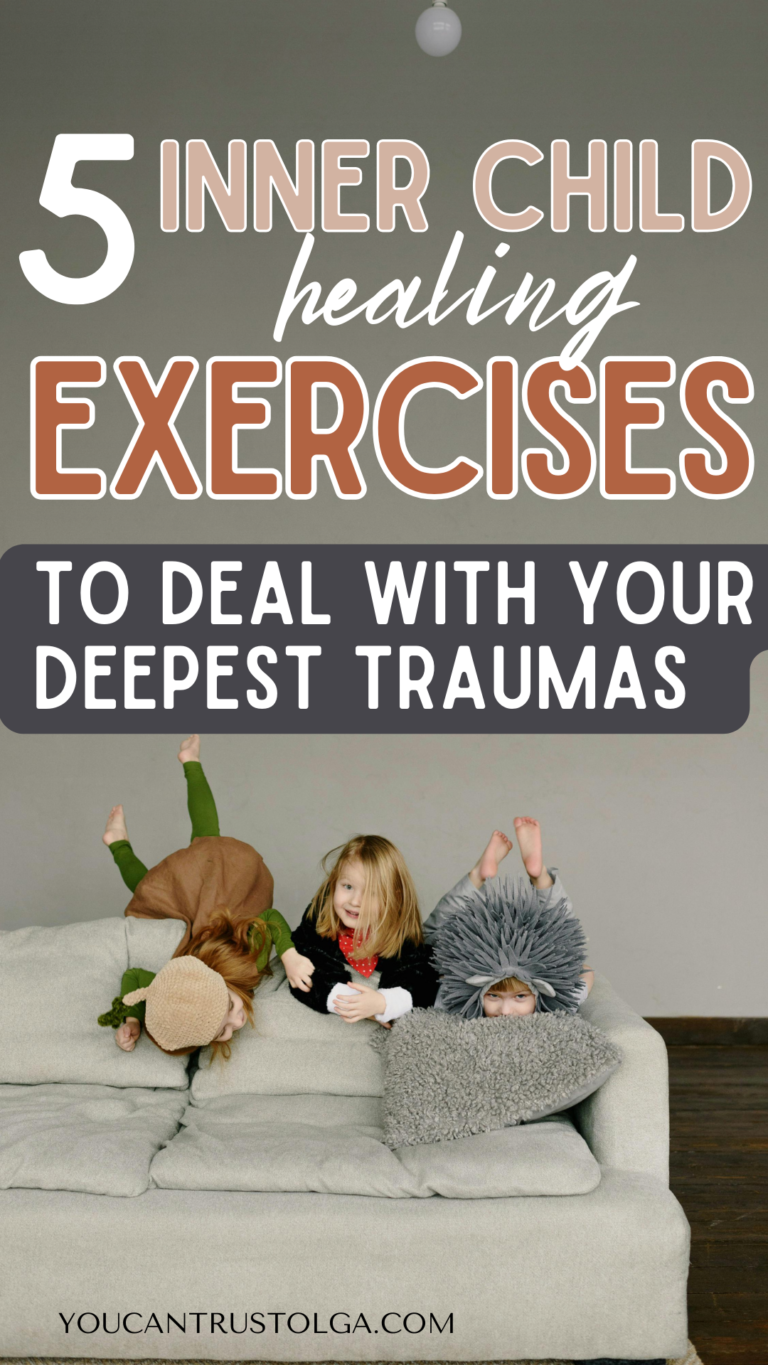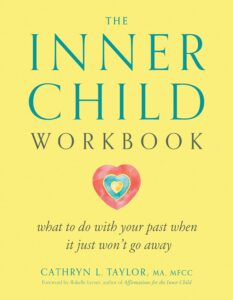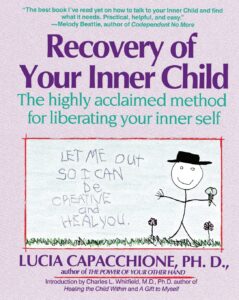Nowadays, there’s a trend to dig into our childhood and become more aware of all the traumatic experiences we’ve been through. It’s like having those aha moments where we finally understand why we do certain things as adults.
Most people who figure out where the problem stems from start to blame their caregivers for their “mistakes”.
Yes, blaming someone else is definitely easier. This initial reaction is also a protective mechanism that makes us externalize negative emotions rather than direct them inward (which can get pretty destructive, indeed). But how far can we run with that?

Awareness is great, don’t get me wrong, but simply understanding the root cause of someone’s problem is hardly ever sufficient. This alone will NOT fix the existing issue.
Regardless of the reasons for our current circumstances and the attribution of fault, we must acknowledge and accept the reality of our present situation.
It takes a level of maturity to understand that from this point forward, we’re solely responsible for our next steps. Since we can’t change the past, we only have this present moment to take action and bring about change. If, of course, we want to.
Healing the inner child
Healing your inner child can become the biggest and most transformative project you have ever endeavored.
It all starts with recognizing that YOU HAVE an inner child and that he or she carries the woundedness and the pain. All that unnecessary baggage interferes with the sound rhythm of your life.
By healing your inner child, you will be able to break free from patterns of self-sabotage and destructive behaviors that stem from unresolved childhood traumas.
Additionally, you will also be able to form healthier relationships with yourself and others by learning how to communicate your needs effectively.
Instead of complaining that your parents didn’t give you enough love or appreciation, or didn’t raise you in a certain way, how about giving it to yourself NOW? Who said it’s too late?
Instead of projecting the image of the missing parent onto others in your adult relationships, how about becoming that parent for yourself?
The choice is yours – you can continue spending your free time scrolling endless Instagram reels or you can invest it more wisely – in your healing journey.
How to heal your inner child?
Healing your inner child is like going back in time to the younger version of yourself and giving them all the love, care, and attention they needed but didn’t receive. It’s about acknowledging your past hurts and traumas and actively working towards healing them.
If you are still not sure whether or not you have a childhood trauma, check out this dedicated article: Do I Have Childhood Trauma? 7 Signs That Your Inner Child Needs Healing
Now let me offer you five excellent and very effective exercises for reconnecting with this vulnerable part of you.
1. Getting to know your inner child
Introspection is a must practice for understanding your inner child and for building a relationship with them.
Gaining awareness about your thoughts, feelings, and behavioral patterns will reveal your blind spots. It will allow you to meet your inner child and to clearly see if there is anything that should be healed.
It is like collecting data, that will help you to meet THE REAL you.
One proven way for effective introspection is, of course, meditation. But apart from it, there are ways you can do self-observation without it, by just observing yourself in daily interactions.
For instance, when someone makes a negative comment and you suddenly feel super sad or lonely, you’ll realize that your wounded child is crying out for some comfort. You know instantly that somewhere there is a problem.
You might not be able to identify the nature of this problem right away but keep observing. The more you do it, the more insights you gain.
So, instead of ignoring your negative emotions, suppressing or numbing them, let them be. Each time you feel uncomfortable – pause and acknowledge the situation that caused them. If you can – write it down in your journal (if you keep one).
I can’t stress this enough: If you truly want to create lasting change, you have to be willing to sit with the uncomfortable feelings. No running from them, no hiding, no numbing distractions. Just facing them head-on and allowing yourself to FEEL them.
Only then can you begin to explore the thoughts behind those feelings—the beliefs and patterns that have been quietly driving the show. Real transformation starts there.
Here’s a good example of how you become self aware.
Imagine, you’re at work, wrapping up your day. As the office clears out, your manager unknowingly flicks off the lights. You call out, catching his attention. Although he apologizes for not noticing you, something heavy rises in your heart. Feeling of neglect, or not being important enough to be noticed.
At that moment, you may want to brush it off and keep working, but instead, take a deep breath and acknowledge the negative feeling that arose. What kind of feeling is that? Can you name it? Stay with it for two minutes.
Pay particular attention to SECONDARY EMOTIONS. For instance, in the above example, you might notice feelings of insignificance, emptiness, or not being important – these are primary emotions.
But if you refuse to feel that way, or if you think those emotions are unacceptable, you quickly get angry at yourself or feel guilty for such a mental vulnerability – these are secondary emotions.
Secondary emotions can be more harmful. Although it’s okay to feel angry, jealous, or lonely, judging yourself for being mad or denying that you can ever feel lonely or jealous is like shooting a second arrow at yourself.
2. Writing a letter
Writing a letter exercise can take a few forms – it can be a letter voicing your inner child, or it can be a letter from grown you to your inner child. Here’s how you do it.
HEALING LETTER TECHNIQUE
Reflect upon a childhood memory when you experienced being misunderstood, unaccepted, abandoned, hurt, ignored, or judged. Take a moment to write a heartfelt letter to the person involved, where emotions, tears, and resentments can flow freely from your words. Be brutally honest, and don’t filter your thoughts and feelings. Allow yourself to express your pain fully, without any reservations.
Another approach is writing a letter from the perspective of your adult self to connect with and build trust with your younger self. It’s like being this caring parent you’ve always wanted, offering guidance and support to your inner child.
This letter is a source of protection, ensuring you receive the love and care you truly deserve. There you can show care by asking your inner child:
How I can validate and reassure you?
How I can be a better parent for you?
3. Inner child art therapy
Art as a therapeutic tool needs no defense, as its soothing effects on mental health have already been proven repeatedly. It has been widely used in official counseling sessions to improve emotional expression, self-awareness, and facilitate change.
That being said, here are a couple of variations of working with your inner child through art therapy:
- Simply draw or paint whatever comes to mind without any judgment or expectations. Let your inner child express itself freely through colors, shapes, and images.
- Visualize your younger self in a particular situation or memory and create an art piece based on that. This exercise can help you process past traumas and emotions.
- Use collage techniques to create a visual representation of your inner child’s desires, fears, and needs. This can be a powerful tool for self-discovery and understanding. You can create an actual vision board or a digital one, using simple and free online tools like Canva, for example.
Remember, the goal is not to create a masterpiece but to connect with your inner child and give them a voice. Allow yourself to let go of any expectations or preconceived notions of what your art should look like.
Below is a specific exercise, intended for somatic healing (if you are not familiar with somatic exercises you can learn it here).
SOMATIC ART HEALING TECHNIQUE
To kickstart the process, just take a moment to sit down, relax, and tune in to any discomfort or pain in your body. Grab a piece of paper and use colors that match those sensations to shade in the areas that feel uneasy. For instance, if your lower back is aching, go ahead and color it in with some fiery reds or oranges to represent the inflammation.
Next up, have a little chat with your back. Ask it questions like: “Hey, what’s up? How are you feeling? Why do you feel that way? What’s causing it? How can I help you out?” It might sound a bit odd, but trust me, our bodies are the ultimate healers because they know exactly what they need.
"The Body Keeps The Score" by B. Kolk
This book is a pure gold when it comes to trauma healing. It dives deep into how trauma doesn’t just live in our memories—it lives in our bodies. It explains how things like anxiety, chronic pain, and emotional numbness often trace back to unresolved trauma, and offers powerful insights into healing through body-centered approaches like yoga, mindfulness, and somatic therapy. A must-read for anyone on a healing journey.
If the above seems overly complex and you’re uncertain about how to approach inner child healing through art, consider using a coloring book specifically designed for this purpose. These books offer incredible therapeutic benefits, with pre-set exercises that guide you along the way.
4. Building trust with your inner child
Most of our traumas, insecurities, and anxieties stem from the moments in our childhood experience when we first questioned our own SECURITY in this world. At some point in the past, we felt that our caregivers were not there for us, and these episodes led to a hasty conclusion that the world is not secure and that we must be guarded at all times.
Security and trust are where everything begins, and when those visions are distorted or compromised we are developing serious communicational and mental issues in our adult life.
The exercise below is the most powerful exercise you can find. It has the potential to evoke intense emotions, stirring powerful feelings deep within you.
INNER CHILD HEALING
Take your jacket, coat, or any other piece of clothing that you own. It’s important that this clothing is yours and is a favorite. Roll it up into a bundle.
Place the resulting bundle nearby, sit comfortably so that there is support for your back, and put your feet on the floor.
With both hands, take the jacket and, holding it tightly, place it on top of your knees. Look at the bundle, vividly imagining that you are holding yourself, a little child, for the first time. What does he/she look like? What is he/she doing? Is he/she scared or trusting you?
Now, speak to the baby, who has never heard your voice before, out loud. For example, repeat the following words: “I am sorry I was absent for so long. Now I am here.” (Pause) “I will never leave you again.” (Pause)“Never. You will always be with me. Can you hear me?” (Pause) “I will never abandon you.” (Pause) “Never. You will always be with me now. I’ll protect you.” (Pause) “Always.”
Repeat this until you are convinced that the ‘baby’ can hear you. At this point, you might cry, and experience intense emotions. That’s good. It means you have managed to establish a connection with your “inner child”.
In conclusion, take a bundle in your hands, press it to your chest, and rock it like a baby. Sing a song. Embrace its sadness, its fears, worries, loneliness, and abandonment. Sit like this, with your eyes closed. Transfer the warmth of your heart to the little one. Feel that the little one is warm and safe in your arms, protected.
This exercise can be repeated once a day, for several days, until your inner child finally believes that you, as an adult, see them, hear them, and protect them.
5. Empty chair technique
Another powerful exercise for connecting with your inner child is the empty chair technique. This technique involves setting up two chairs facing each other and imagining your inner child sitting in one of them.
EMPTY CHAIR TECHNIQUE
Start by closing your eyes and take a few deep breaths. Imagine yourself as a child, around 5-7 years old, sitting in the chair across from you. Take some time to acknowledge their presence and imagine what they might look like.
Then, begin a dialogue with your inner child. Ask them questions such as “What do you need from me?”, “What do you want to tell me?”, or “What makes you happy/sad/angry?”. Allow yourself to fully listen and respond with compassion and understanding.
Then take an opposite sit and speak on your inner child’s behalf. What would your inner child answer to this question? Construct a dialog between you and your inner child
It may feel silly or strange at first, but this exercise can help you tap into your inner child’s needs and desires.
After the dialogue, take a moment to thank your inner child for sharing with you.
My 3 favorite inner child healing workbooks
Workbooks are truly a hidden gem that shouldn’t be overlooked.
They are not only perfect for engaging in inner child healing exercises effortlessly, but they also offer a hands-on experience that allows you to unleash your creativity through writing and drawing.
What makes them stand out is the awesome structure and guidance they offer, helping you track your progress and stay fully dedicated to your healing journey.
Here are my top 3 favorite workbooks for inner child healing that you can find useful:
1. "Inner Child Healing Workbook" by Cathryn L. Taylor
This workbook offers a comprehensive guide to understanding and healing your inner child. It includes various exercises and activities to help you reconnect with your inner child, identify patterns and wounds, and ultimately heal them.
2. “Recovery of Your Inner Child: The Highly Acclaimed Method for Liberating Your Inner Self” by Lucia Capacchione
“Recovery of Your Inner Child” is a unique book that guides you in reconnecting with your Inner Child on a profound level. Through writing and drawing WITH YOUR NON-DOMINANT HAND, you can authentically experience your emotions and recapture the sense of wonder. Dr. Capacchione provides numerous interactive exercises that will assist you in embracing your Vulnerable Child and Angry Child, uncovering the Nurturing Parent within, and ultimately unlocking the Creative and Magical Child that can bring healing to your life.
3. “Dear Me: Love Letters To My Inner Child” by Bernice Angoh
In this heartwarming book, author Bernice Angoh invites you to embark on a journey of self-love and healing with your Inner Child. Through writing love letters, you will learn to forgive yourself for past hurts and traumas, release negative beliefs and patterns, and embrace the beautiful, innocent child within you. With each letter, you will deepen your connection with yourself and find inner peace.
In addition to these top picks, there are many other great workbooks available that can assist you in your inner child healing journey. Make sure to do some research and find one that resonates with you personally.
It’s important to remember that inner child work is not a quick fix. It takes time, commitment, and patience. But the rewards are immense – increased self-awareness, improved relationships with others, and most importantly, a deeper connection with ourselves.








